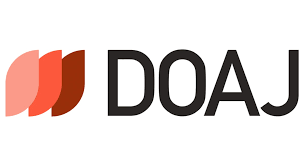Desarrollo de las destrezas productivas en idioma inglés de estudiantes universitarios
Resumen
En la práctica de la docencia universitaria, se observa que la producción oral y escrita en idioma inglés son las destrezas que requieren de mayor soporte didáctico al momento en que los alumnos, en un contexto de habla castellana, intentan comunicarse en situaciones ajustadas al contexto de la cultura anglosajona. Este trabajo de investigación-acción tiene como objetivo fortalecer las destrezas productivas en el idioma inglés al alumnado universitario, a través de una intervención educativa basada en un enfoque comunicativo. Para la parte empírica, se contó con la participación de 70 estudiantes a quienes se aplicó un pre test y pos test utilizando el examen KET de Cambridge para determinar su nivel de producción oral y escrita, al inicio y final de la intervención educativa, que se ejecutó durante dos semestres universitarios a un grupo control y un grupo intervención. Los resultados obtenidos reflejan un incremento positivo en los niveles de producción oral y escrita en idioma inglés en los estudiantes del grupo intervención, quienes ahora son capaces de comunicarse de manera eficiente. PALABRAS CLAVE: Motivación; destrezas productivas de la lengua; adquisición de la segunda lengua; idioma inglés; enfoque comunicativo.Citas
Asher, J. (1977). Learning Another Language Through Actions: The Complete Teacher’s Guide Book. Los Gatos, Sky Oaks Productions. (2nd ed. 1982)
Bañuelos, A. (1990). Motivación Escolar: Una Propuesta Didáctica. Revista Perfiles Educativos. Núm. 49-50, Jul. – dic., México.
Breen, M. y Candlin, C. (1980). The essentials of communicative curriculum in language teaching. Applied Linguistics. Pp.89-112
Brophy, J. (1986). On Motivating Students. Occasional Paper. No. 101. East Lansing, Michigan: Institute for Research on Teaching, Michigan State University.
Canale, M. & Swaim, M. (1980). Theoretical bases of communicative approaches to second language teaching and testing. Applied Linguistics I, Pp.1-47.
Consejo de Europa (2001). Marco común europeo de referencia para las lenguas: aprendizaje, enseñanza, evaluación. (2002) (http://cvc.cervantes.es/obref/marco). Madrid: Ministerio de Educación, Cultura y Deporte, Instituto Cervantes, Anaya (2003)
Díaz – Barriga, F. y Hernández, G. (2002). Técnicas docentes para un aprendizaje significativo, una experiencia constructivista. México: Mc Graw – Hill.
Diaz-Campos, M. (2004). Context of learning in the acquisition of Spanish second language phonology. Studies in second language acquisitions 26. Pp. 249-273.
Espi, M. y Azurmendi, M. (1996). Motivación, actitudes y aprendizajes del español como segunda lengua extranjera. Revista española de lingüística aplicada, (11), Pp.63-76.
Gardner, R. y Lambert, W. (1972). Attitudes and Motivation in Second Language Learning. Newbury House Publishers, Mass.
Gardner, R. (1985). Social Psychology and Second Language Learning. Arnold Publishers, London.
Hamers, J. (1981). Psycological approaches to the development of bilinguality en H. Beatens Beardsmore (Ed.). Elements of Bilingual Theory. Bruselas: Vrije Universiteit te Brussels.
Koontz, H. y Weihrich, H. (1999). Administración, una Perspectiva Global.11ª. Edición. Mc Graw.
Kruglanski, A. (2001). Motivation and Social Cognition: Enemies or a Love Story?. International Journal of Psychology and Psychological Therapy. Vol1. No 1. Pp. 33-45.
Littlewood, W. (1981). Communicative Language Teaching. Cambridge University Press. Cambridge.
Maslow, A. (1954). Motivation and personality. New York: Harper
Mitchell, R. (1993). Teaching Modern Languages Cambridge University
Moskowitz, G. (1978). Caring and Sharing in the Foreign Language Class. Rowley, MA: Newbury House.
Ordorica, D. (2010). Motivación de los alumnos universitarios para estudiar inglés como lengua extranjera. Revista Electronica Leaa. Año 3. No2.
Putnam, R. (1993). The Prosperous Community - Social Capital and Public Life, en American Prospect, No. 13. Washington. D.C
Peris, E. (2007). La enseñanza de los idiomas modernos: De los procesos a los contenidos. Marcoele cable, núm. 1, abril de 1988. Pp 16-21.
Richards, J. y Rodgers, T. (1998). Enfoques y métodos en la enseñanza de idiomas. Cambridge: University Press.
Ryan R. y Deci, E. (2000). La teoría de la autodeterminación y la Facilitación de la Motivación Intrínseca, el Desarrollo Social, y el Bienestar. American Psychologist. Vol. 55, No.1. Pp. 68-78
Stern, H. (1983). Fundamental concepts of language teaching. Oxford University Press. Oxford.Swarbrick, A (1993). Teaching Modern Languages. Open University.
Solana, R. (1993). Administración de Organizaciones. Buenos Aires: Ediciones Interoceánicas.
Widdowson, H. (1990). Aspects of language teaching. Oxford University Press. Oxford.
Wilkins, D. (1976). Notional Syllabuses. Oxford University Press. Oxford.
Zarate, G. (1995). La problématisation de la relation à l’altérité: l’apprenant et l’enseignant de langue comme acteurs sociaux de l’entre deux, en C. Briane y A. Cain (eds.), Quelles perspectives pour la recherche en didactique des langues ? París: INRP, Pp.11-16. ENS de Saint-Cloud.
Descargas
Publicado
Cómo citar
Número
Sección
Licencia
Derechos de autor 2016 German Carrera Moreno

Esta obra está bajo una licencia internacional Creative Commons Atribución 4.0.
Los autores/as que publiquen en esta revista aceptan las siguientes condiciones:
- Los autores/as conservan los derechos de autor y ceden a la revista el derecho de la primera publicación, con el trabajo registrado con la licencia de atribución de Creative Commons, que permite a terceros utilizar lo publicado siempre que mencionen la autoría del trabajo y a la primera publicación en esta revista.
- Los autores/as pueden realizar otros acuerdos contractuales independientes y adicionales para la distribución no exclusiva de la versión del artículo publicado en esta revista (p. ej., incluirlo en un repositorio institucional o publicarlo en un libro) siempre que indiquen claramente que el trabajo se publicó por primera vez en esta revista.







